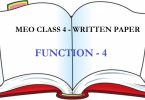Information to be included in the trim and stability booklet
General
A trim and stability booklet is a stability manual, to be approved by the classification Society, which is to contain information to enable the Master to operate the ship in compliance with the applicable requirements contained in the Rules.
The format of the stability booklet and the information included vary depending on the ship type and operation.
List of information
The following information is to be included in the trim and stability booklet:
- a general description of the ship, including:
- the ship’s name and the Society classification number
- the ship type and service notation
- the class notations
- the yard, the hull number and the year of delivery
- the Flag, the port of registry, the international call sign and the IMO number
- the moulded dimensions
- the draught corresponding to the assigned summer load line, the draught corresponding to the assigned summer timber load line and the draught corresponding to the tropical load line, if applicable
- the displacement corresponding to the above- mentioned draughts
- instructions on the use of the booklet
- general arrangement and capacity plans indicating the assigned use of compartments and spaces (cargo, passenger, stores, accommodation, etc.)
- a sketch indicating the position of the draught marks referred to the ship’s perpendiculars
- hydrostatic curves or tables corresponding to the design trim, and, if significant trim angles are foreseen during the normal operation of the ship, curves or tables corresponding to such range of trim are to be introduced. A reference relevant to the sea density, in t/m3, is to be included as well as the draught measure (from keel or underkeel).
- cross curves (or tables) of stability calculated on a free trimming basis, for the ranges of displacement and trim anticipated in normal operating conditions, with indication of the volumes which have been considered in the computation of these curves
- tank sounding tables or curves showing capacities, centres of gravity, and free surface data for each tank
- lightship data from the inclining test, including lightship displacement, centre of gravity co-ordinates, place and date of the inclining test, as well as the Society approval details specified in the inclining test report. It is suggested that a copy of the approved test report be included.
Where the above-mentioned information is derived from a sister ship, the reference to this sister ship is to be indicated, and a copy of the approved inclining test report relevant to this sister ship is to be included.


